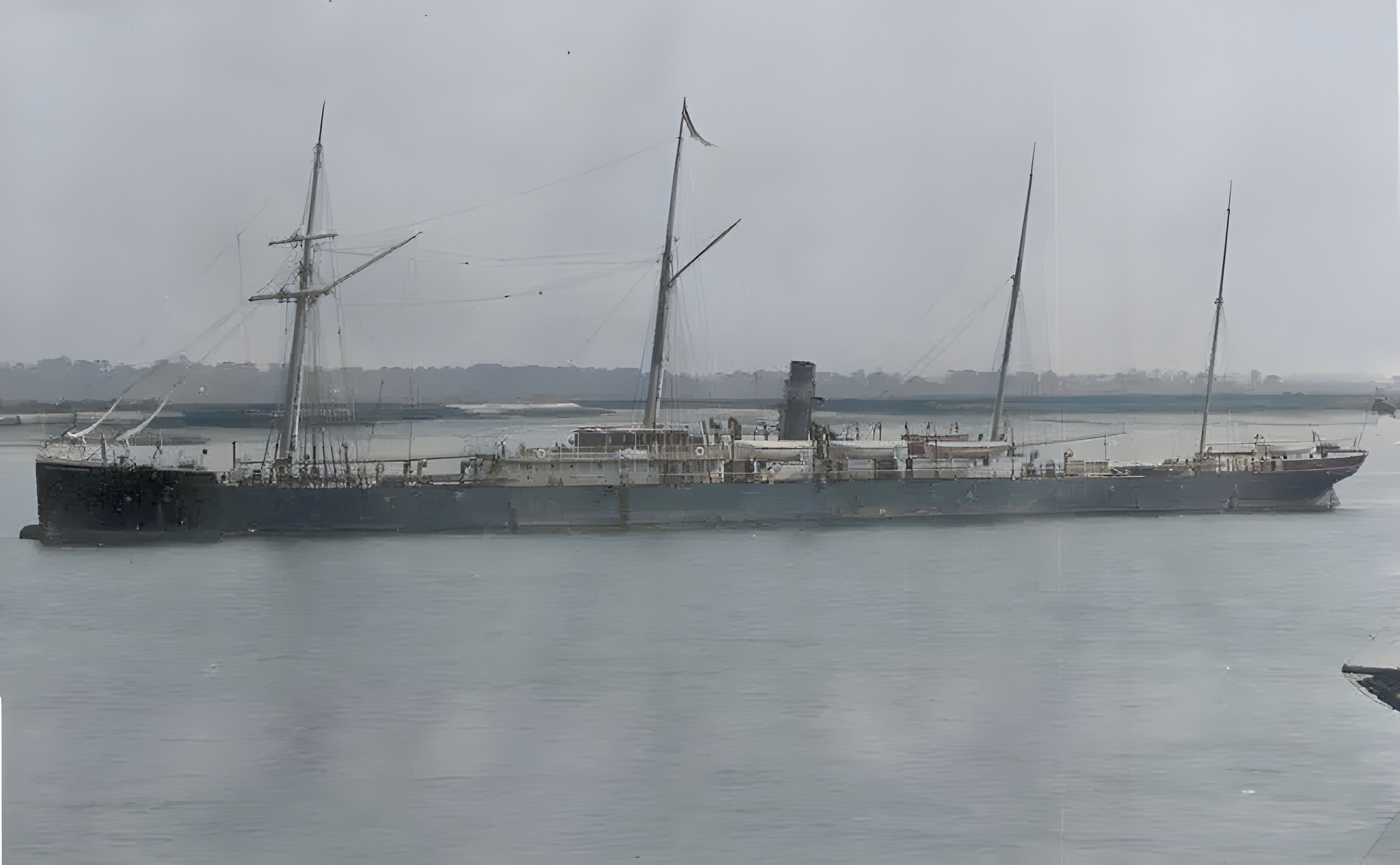 >
>
Duchess of Devonshire: From Victorian Splendour to Wartime Mystery Step back in time to the crisp winter day of 21st January 1897. Imagine the icy wind whipping across the bustling shipyard of the Naval and Armament Construction Company in Barrow-in-Furness. Amidst the clang of hammers and shouts of workers, yard number 255, a magnificent ship christened the TSS Duchess of Devonshire by the elegant Louisa Cavendish, Duchess of Devonshire herself, slides gracefully into the water. This was no ordinary vessel. Boasting four luxurious decks – lower, main, promenade, and shade – the Duchess was a far cry from the cramped quarters of most ships. With a length of 300 feet and a beam of 35.1 feet, she was designed to accommodate 1,250 passengers in comfort and style. Imagine yourself stepping aboard. Passengers could unwind in elegant first-class staterooms located amidships, with sleeping berths for 124 discerning travellers. Plush carpets cushioned their every step, and gleaming brass fixtures adorned the mahogany-panelled walls. On the promenade deck, fourteen staterooms awaited, along with a dedicated smokeroom where gentlemen could recline in leather armchairs, the air thick with the aroma of fine tobacco, and a lively bar where the clinking of glasses and laughter mingled with the soft melodies of a piano, perhaps spilling out onto the deck, where the tang of salt spray filled the air and the deep blue of the Irish Sea stretched to the horizon. Her maiden voyage on 9th April 1897, was a spectacle. Under the command of the experienced Captain Myerscough, the Duchess, powered by her two triple-expansion engines driving twin screws, glided from Barrow to Belfast in a mere six hours, achieving an impressive speed of 18 knots. Passengers, dressed in their finest attire, promenaded on the deck, the ladies' colourful parasols a vibrant counterpoint to the deep blue of the Irish Sea. They must have marvelled at the speed and comfort of their vessel, a testament to Barrow's shipbuilding prowess, as they indulged in delicate pastries and fine wines in the first-class dining saloon located on the main deck, accessible by a grand staircase from the promenade deck above. The Duchess's life wasn't all smooth sailing, however. In 1907, she changed hands, becoming part of the Midland Railway fleet, her luxurious interiors now filled with passengers travelling between bustling ports. Then, the world was plunged into the chaos of the First World War. The Admiralty, recognising the Duchess's potential, requisitioned her for wartime service. The once opulent staterooms were likely repurposed for troop bunks, the elegant dining saloon perhaps transformed into a mess hall. The sounds of laughter and lively conversation were replaced by the clatter of boots on the steel deck and the distant rumble of naval guns. The war left its scars. A tragic boiler explosion in 1919 claimed three lives, a stark reminder of the dangers faced even as the world returned to peace. The Duchess even had a brush with misfortune in 1922, a minor collision with the coasting steamer Trevor near the Isle of Man, a jarring reminder of the ever-present hazards of the sea. Peacetime saw the Duchess back in commercial service, acquired by the London, Midland and Scottish Railway in 1923. However, her ownership changed again in 1928 when she was sold to Bland Line of Gibraltar and christened with a new name: Gibel Dersa. Her port of registry shifted from Barrow to Gibraltar, and perhaps her once-gleaming white hull was repainted, her luxurious fittings replaced with more functional furnishings. The Gibel Dersa's story continued through the years, even facing requisitioning again during the tumultuous years of the Second World War. She passed through different hands - the Dalhousie Steam & Motor Ship Co of London in 1943, then A. Benjamin & Co of Gibraltar in 1947 - her story slowly fading, until finally, in 1949, her remarkable journey came to an end in the shipbreaking yards of Malaga, Spain. The TSS Duchess of Devonshire, or the Gibel Dersa as she later became, is a fascinating piece of maritime history. Her story reflects the evolution of shipbuilding, the impact of war, and the ever-changing world of transportation. So, the next time you hear about Barrow-in-Furness, remember the grand dame, the Duchess of Devonshire, who once sailed the seas in style and then bravely served during wartime. #BarrowShipbuilding #MaritimeHistory #WWI #VictorianEra